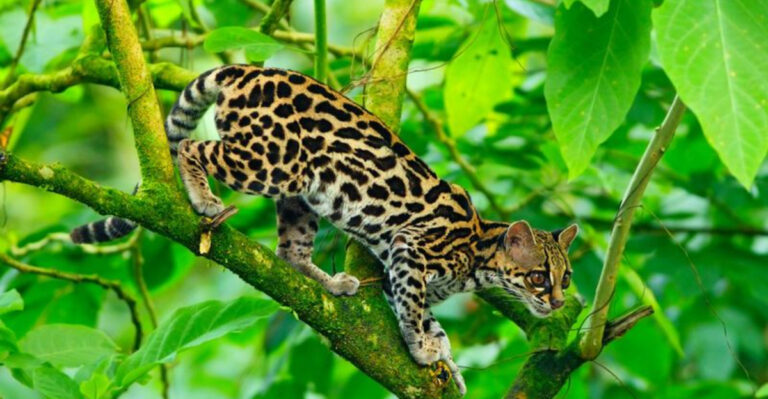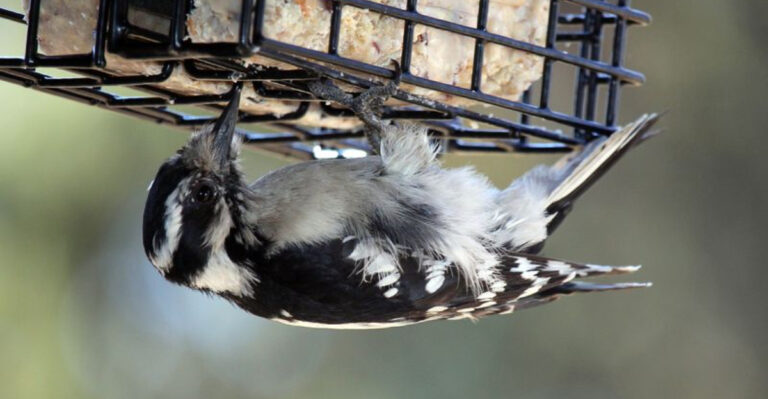21 Things Californians Should Know About Living Near Coyotes
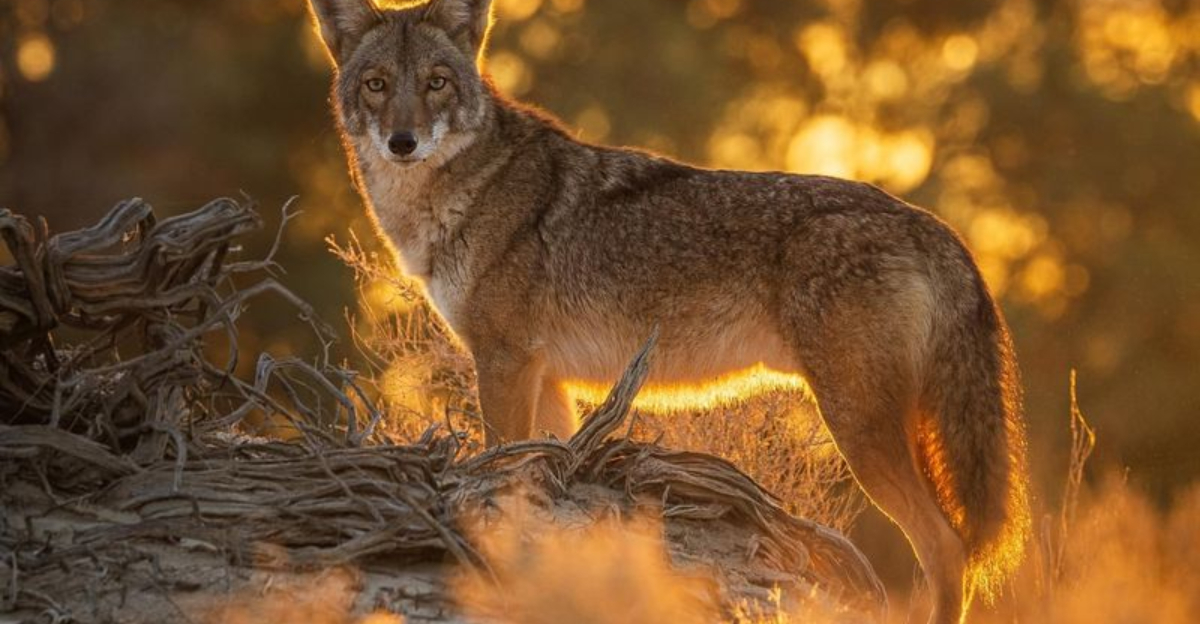
Coyotes are becoming more common in California suburbs, sparking both interest and concern.
As adaptable creatures, they have learned to thrive in urban environments. Understanding these elusive animals is key to fostering peaceful coexistence.
1. Coyote Adaptability
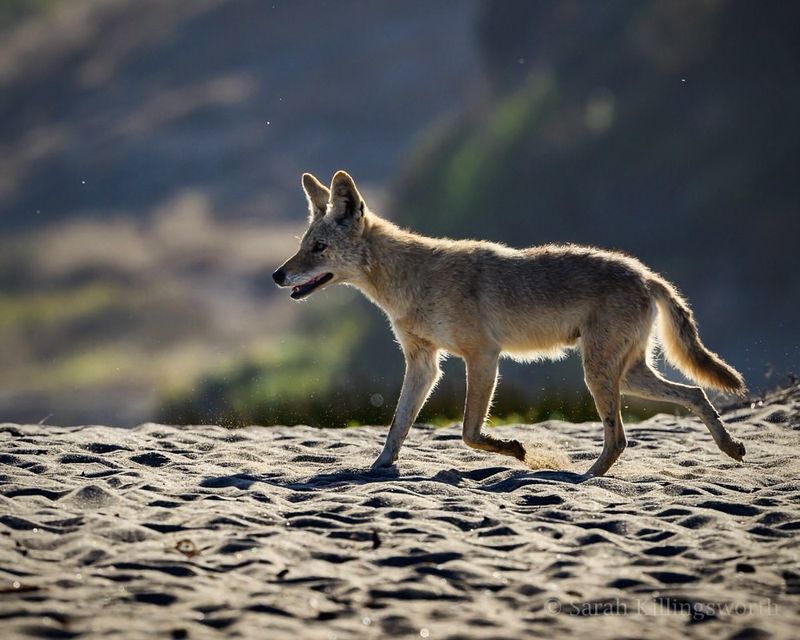
Coyotes are incredibly adaptable, thriving even in suburban areas. As humans move in, they adjust their diet and behavior to make the most of their new environment.
In California suburbs, coyotes have become more nocturnal, taking advantage of quieter nighttime streets. This helps them avoid people while exploring the area.
To keep coyotes at bay, make sure to secure trash and bring in pet food at night. Simple steps can prevent attracting these clever creatures into your yard.
2. Coyote Urban Legends
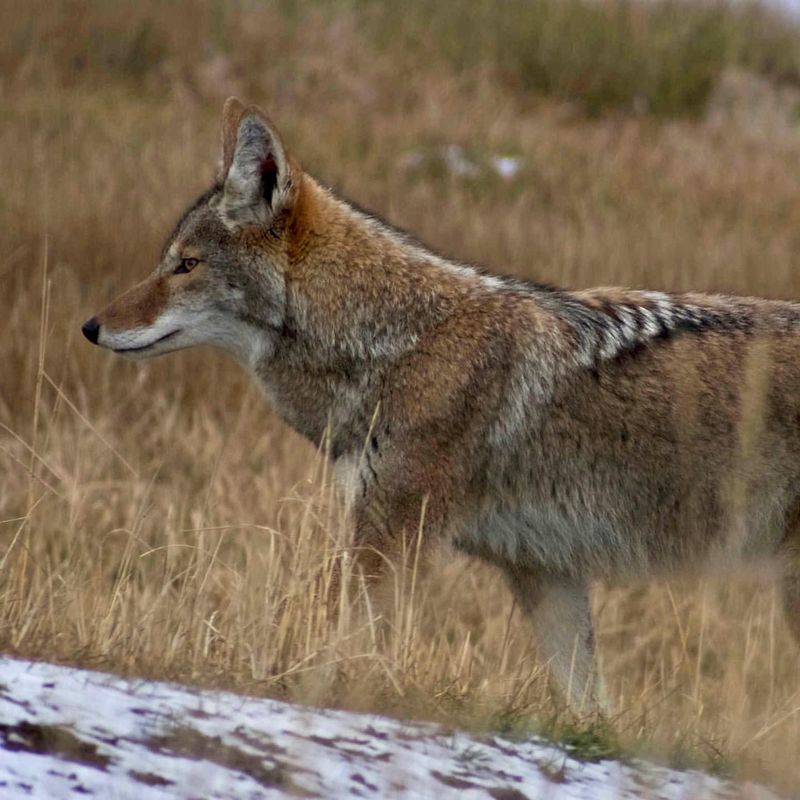
Urban legends about coyotes contribute to their mystique and shape public perceptions.
Stories often highlight their cunning and intelligence, reflecting their adaptability and resourcefulness.
However, some legends exaggerate the dangers coyotes pose, creating fear and hostility.
While coyotes can defend themselves, they typically avoid human contact and are not a significant threat.
3. Diet Of Urban Coyotes
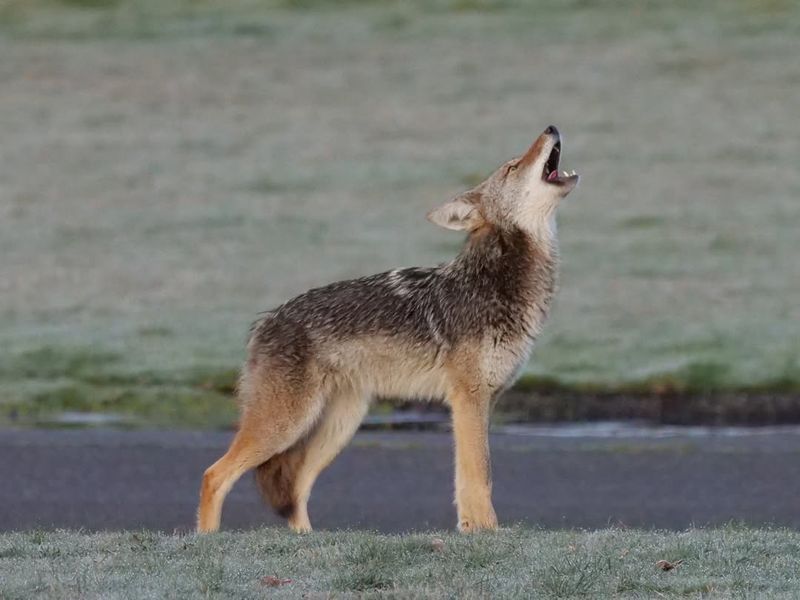
Coyotes in suburban areas adapt their diet to whatever is available. They eat small mammals, fruits, seeds, and even human-associated food like garbage or pet food.
Rabbits and rodents make up a large part of their diet, helping control those populations. However, they’ll also scavenge, especially if food is easily accessible in residential areas.
To avoid conflicts, secure trash and bring pet food inside. Understanding their diet can help communities reduce coyote presence in neighborhoods.
4. Coyote Tracking
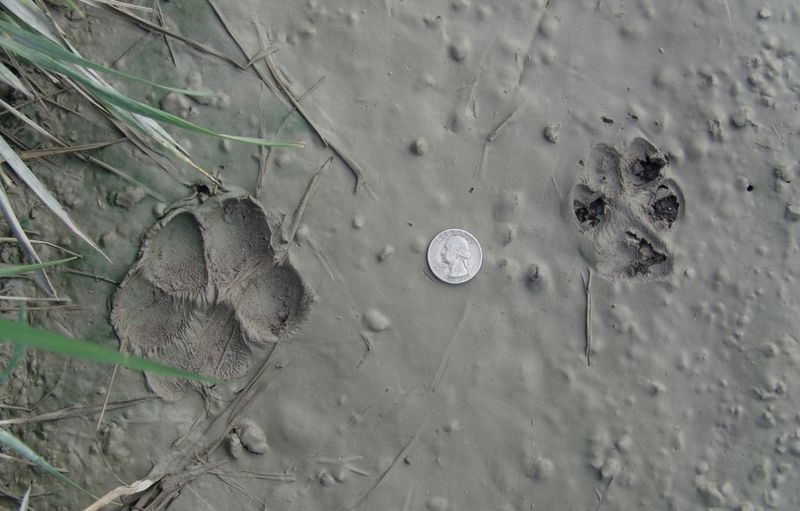
Tracking coyotes can be an exciting adventure for wildlife lovers. Their oval-shaped tracks with claw marks are clues that reveal their movements and habits.
You can track coyotes in local parks, hiking trails, or even suburban areas. It’s a great way to connect with nature and spot wildlife signs you might otherwise miss.
For an even deeper dive, consider joining a workshop or guided tour. Local wildlife experts can teach you all about these fascinating creatures.
5. Coyote Breeding Habits
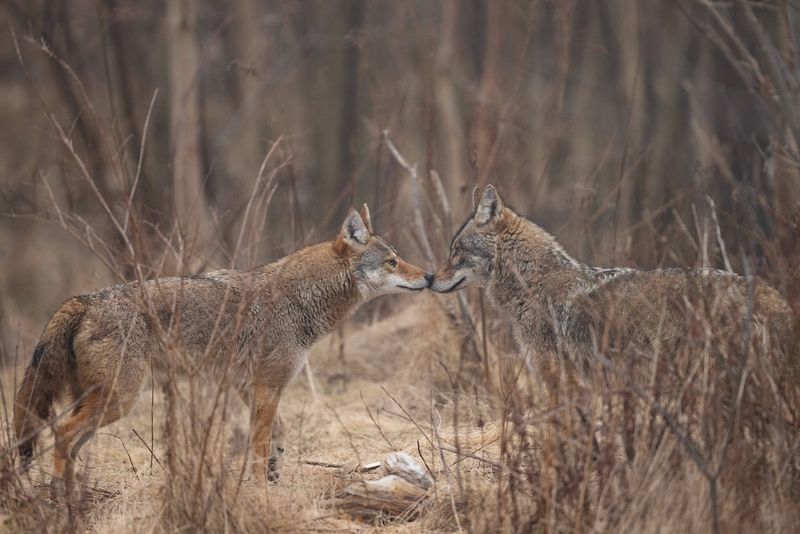
Coyote breeding habits play a key role in their life cycle and offer insights into their behavior.
They typically mate for life, with courtship behaviors strengthening their bond during late winter.
In suburban areas, these rituals are more noticeable as coyotes establish territories in human-populated zones.
Their 63-day gestation period leads to the birth of pups in the spring, with litters averaging four to seven pups.
6. Coyote Territorial Behavior
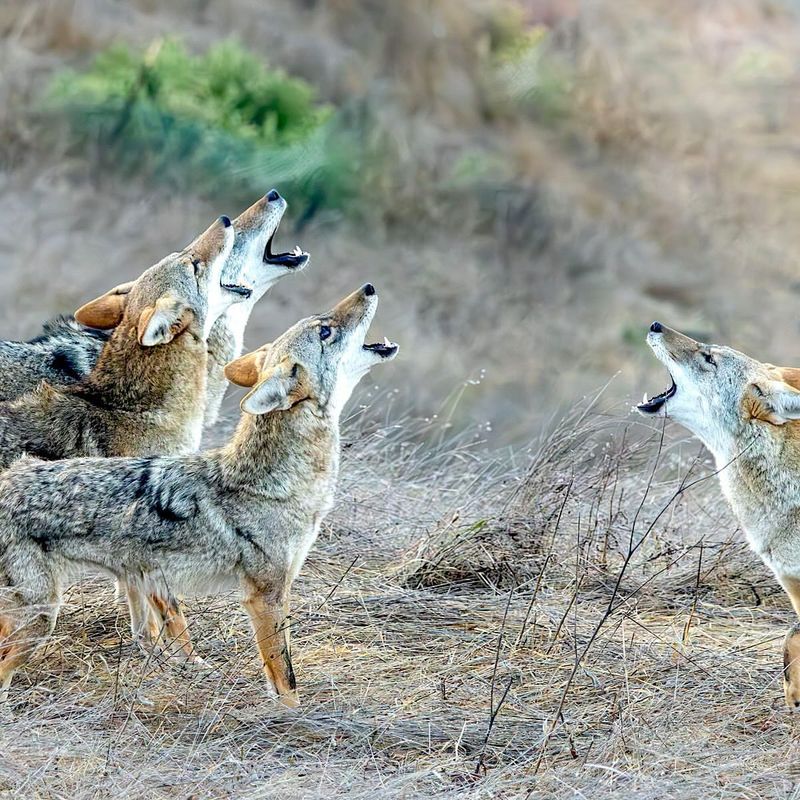
Coyotes are territorial animals, and understanding this behavior is key to managing suburban interactions.
Each pack defends a defined territory to ensure access to resources.
In urban areas, these territories may overlap with neighborhoods, leading to more coyote sightings.
Coyotes mark their territories through scent marking, vocalizations, and visual signals, with urine and feces being key methods.
7. Coyote Family Structure
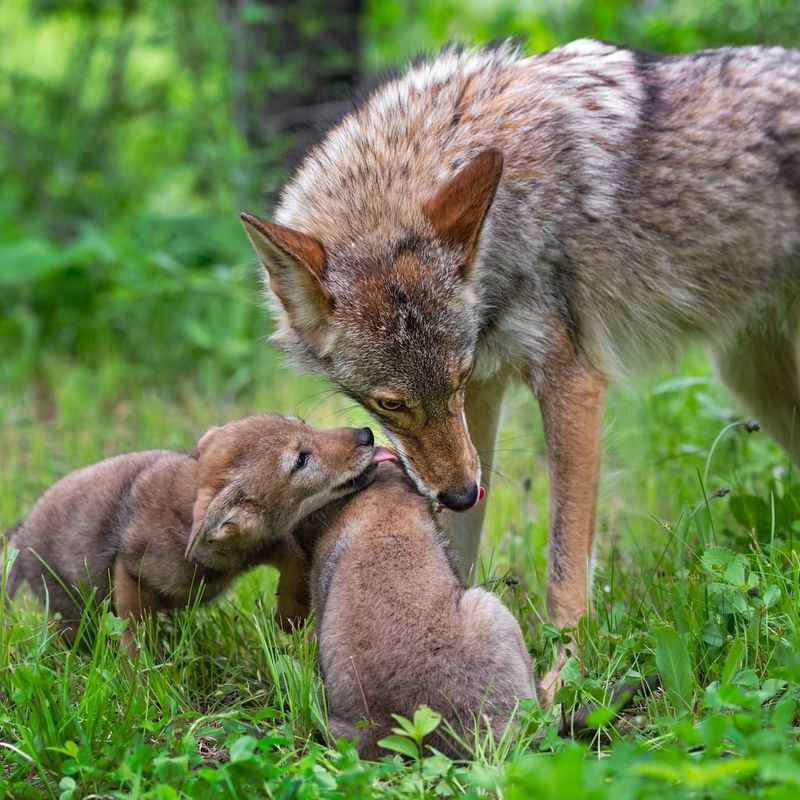
Coyotes live in family packs, typically made up of a mated pair and their offspring. These packs are crucial for raising pups and ensuring their survival.
In suburban areas, coyote territories can overlap with human spaces, especially during pup-rearing season.
This is when sightings increase, as parents hunt to feed their young.
Understanding their family structure helps us appreciate their presence as caregivers.
8. Coyote Behavior At Night
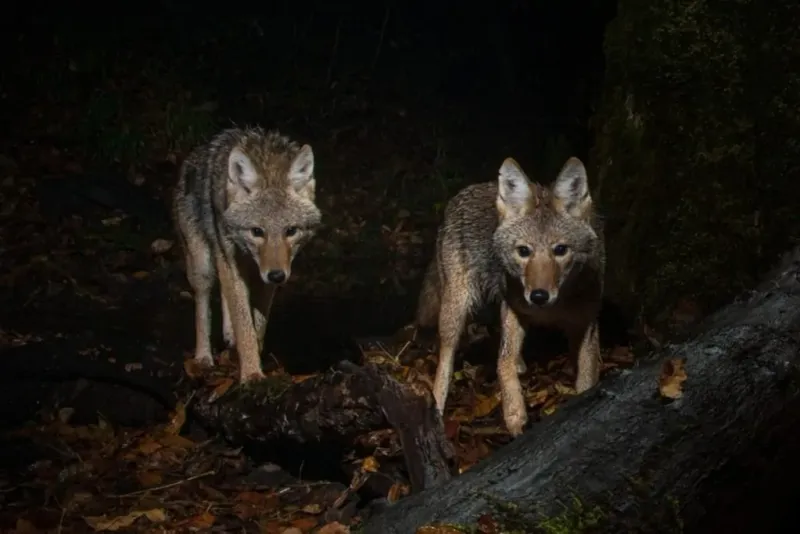
Coyotes are night owls, most active after dark when the world is quieter. This is when they hunt, explore, and mark their territory.
You might hear their iconic howls and yips echoing in the night. These vocalizations help them communicate and ward off any intruders.
Understanding these sounds can make it easier to interpret coyote activity. No need to panic—it’s just their way of talking to each other!
For those curious about their nocturnal habits, a little night-vision observation can be a fun way to learn. Just remember to keep your distance and enjoy the show!
9. Coyote Health And Parasites
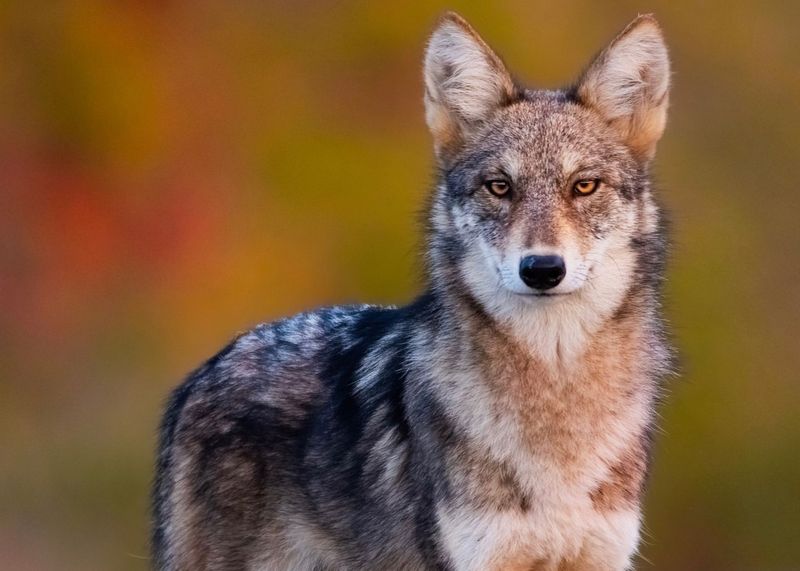
Coyotes, like many wild animals, deal with health issues and parasites, especially near humans and pets.
They’re often affected by ticks, fleas, and worms, which can cause discomfort.
While parasites can make them look a bit scruffy, coyotes are pretty tough and often recover on their own.
Rabies is rare but still a concern, which is why vaccinating pets helps keep everyone safe.
10. Coyote Impact On Local Wildlife
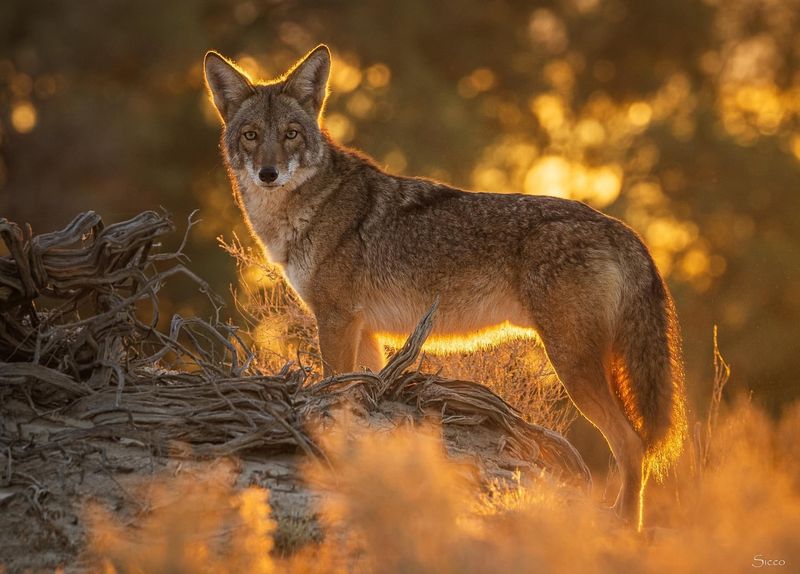
Coyotes are vital to the ecosystem, controlling populations of small mammals and rodents. Their presence helps maintain a healthy balance in the environment.
But they can also pose risks to vulnerable species like ground-nesting birds and small mammals.
In suburban areas, they may even go after domestic cats or small pets if the opportunity arises.
To prevent coyotes from entering residential areas, securing food sources and keeping an eye on pets is essential.
11. Coyote Myths And Misconceptions
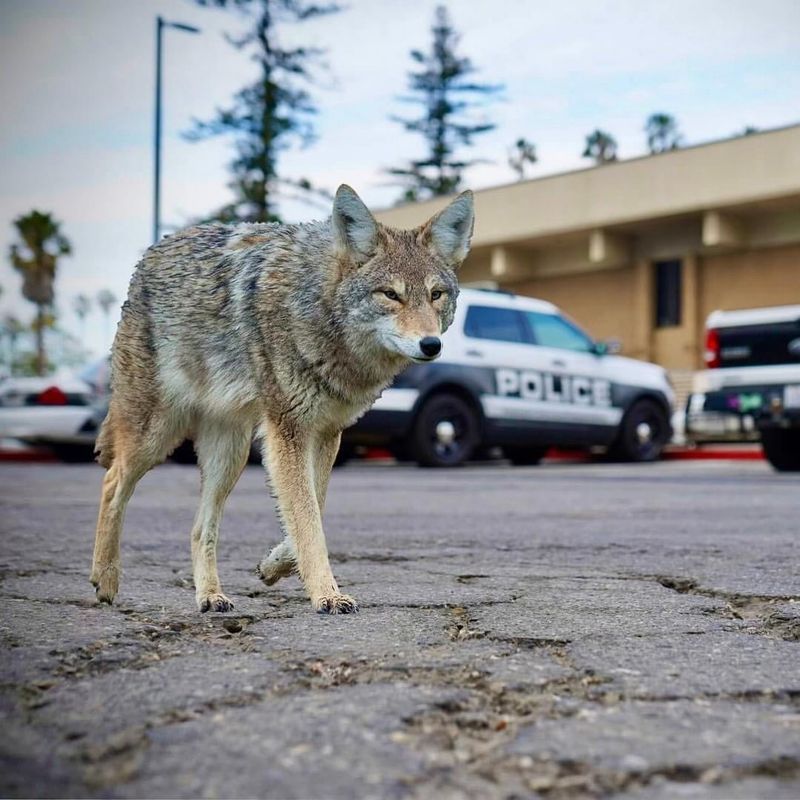
Coyotes are often misunderstood, surrounded by myths that influence public perception.
A common misconception is that they are dangerous to humans, which is largely unfounded.
Though they can defend themselves, coyote attacks on humans are extremely rare.
Another myth is that removing coyotes will solve conflicts, but it often leads to unintended consequences.
When coyotes are removed, rodents may thrive, disrupting the ecosystem. New coyotes often take their place, continuing the cycle.
12. Coyote Communication
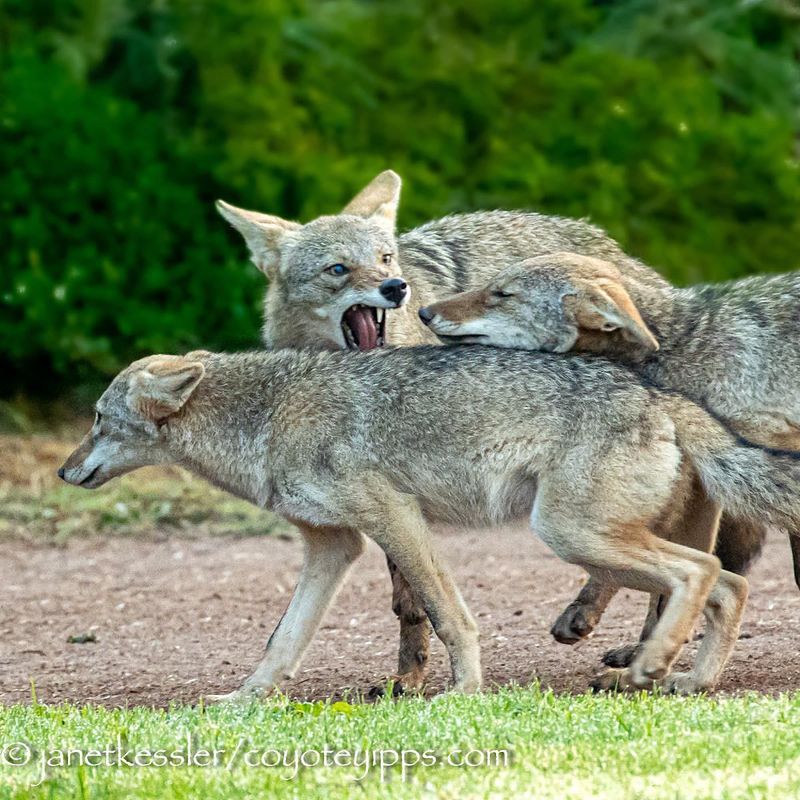
Coyotes are super social and have a whole language of their own! They use howls, body language, and scent markings to communicate with each other.
You’ll hear them howling more in suburban areas, especially during the breeding season in late winter. Those eerie sounds can travel far, making it seem like there are more coyotes than there really are.
Howling is totally natural for them, so don’t worry—it’s not a sign of aggression. It’s just how they talk to each other.
13. Coyote Safety Tips For Residents
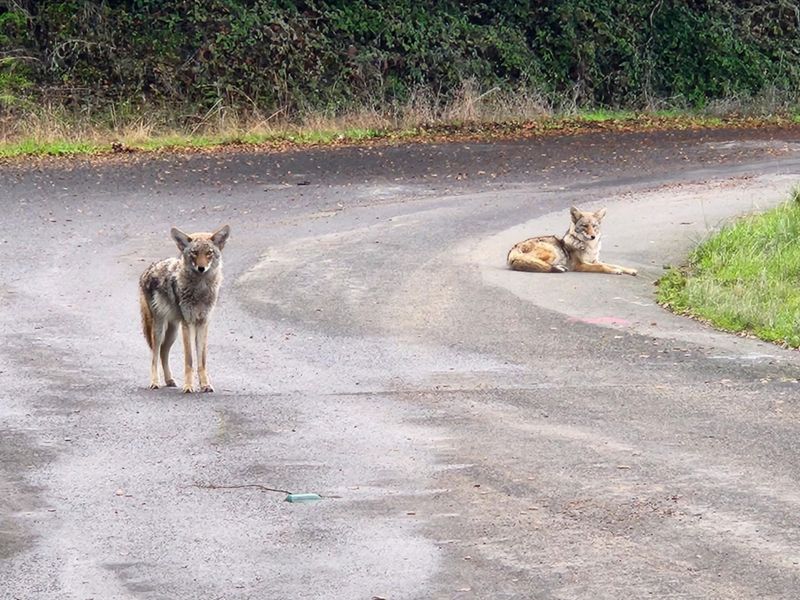
Living alongside coyotes in suburban areas requires practical safety measures to prevent conflicts. Educating residents on simple strategies can help foster peaceful coexistence.
Securing garbage bins and removing outdoor food sources, like pet food or fallen fruit, is crucial.
Keeping pets supervised and leashed when outside also reduces the risk of negative interactions.
Teaching children about coyote behavior can promote safe interactions.
14. Coyote Legal Protection
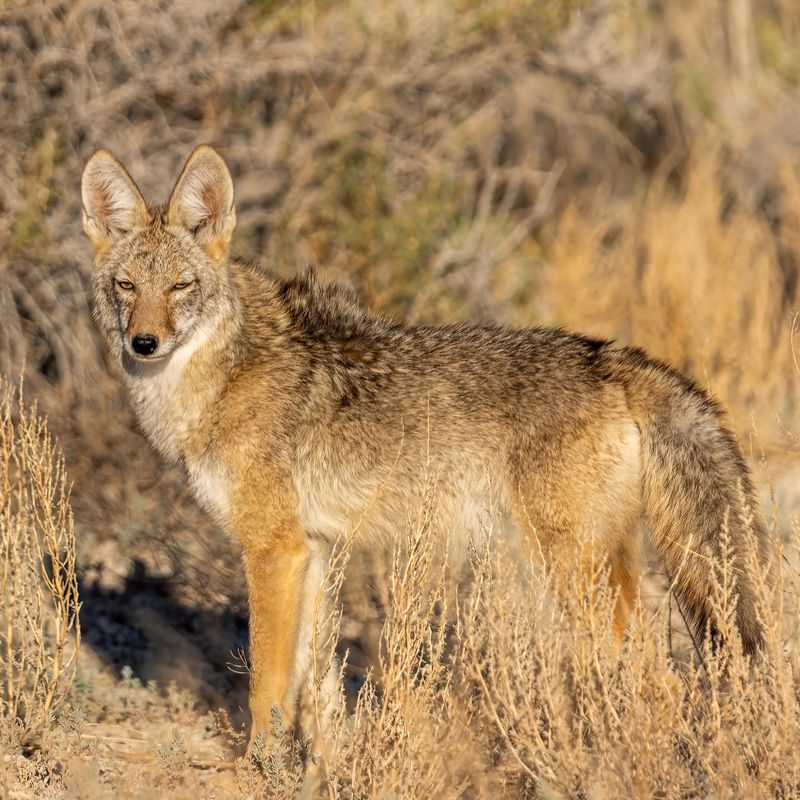
Coyotes are protected under laws that ensure their conservation and humane treatment.
In California, they are classified as non-game animals, with specific rules governing their management.
Residents must be aware of these protections to avoid violating wildlife laws. Trapping or relocating coyotes without a permit is illegal, and using poisons is prohibited.
15. Coyote Education And Outreach
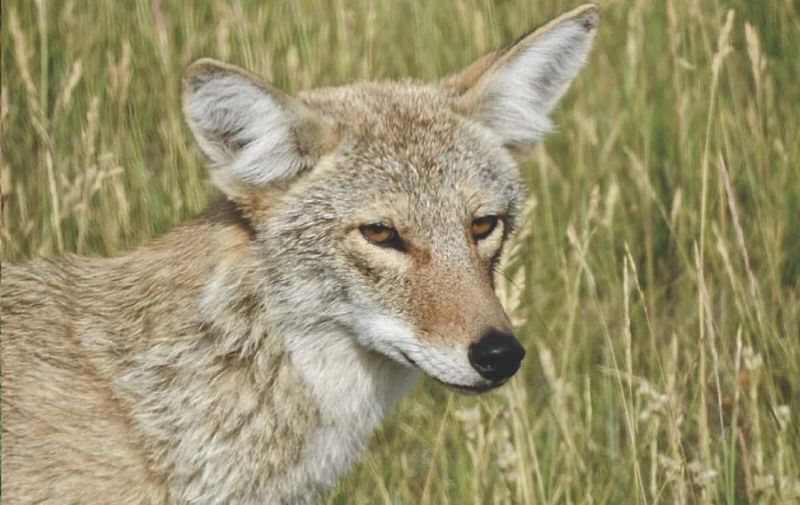
Education and outreach are key to fostering harmony between humans and coyotes. Residents can learn about coyote behavior, ecology, and the value of coexistence.
Workshops, brochures, and school programs help spread knowledge. Involving wildlife experts ensures credible information and practical advice.
Encouraging dialogue between residents and wildlife managers leads to sustainable solutions.
Prioritizing education helps reduce conflicts and promote responsible wildlife management.
16. Coyote Signs

Recognizing coyote tracks and signs is a handy skill for suburban residents.
Coyote tracks are narrow and elongated, with visible claw marks, and are often more symmetrical than dog prints.
Other signs include scat, which varies with diet, and territorial markings like scratch marks and scent posts.
These clues give insights into coyote movement and boundaries.
Learning to identify these signs boosts awareness of wildlife in your area.
17. Coyote Conflict Resolution
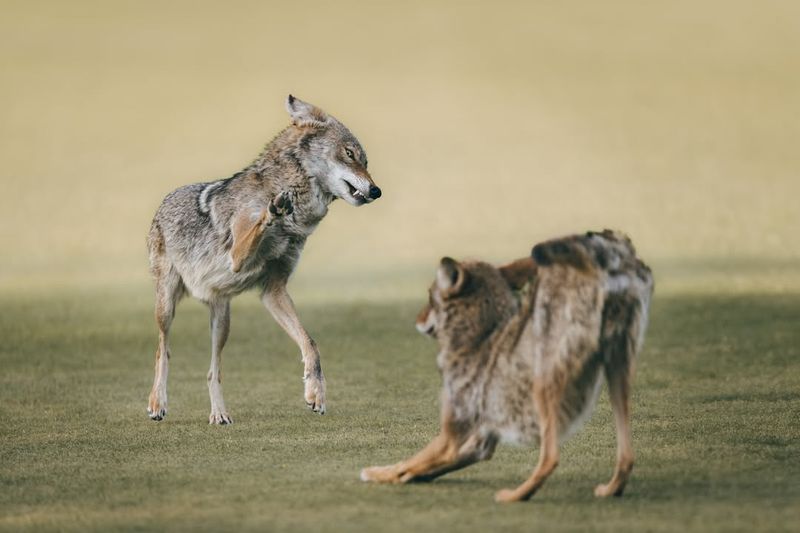
Addressing conflicts with coyotes in suburban areas requires collaboration between residents, wildlife managers, and local authorities.
Effective strategies focus on coexistence while ensuring safety for both humans and coyotes.
Preventive measures, like securing food sources, managing pet activities, and educating residents, are key to avoiding conflicts.
Non-lethal deterrents and aversion techniques can also help discourage coyote presence without harm.
Open communication among stakeholders is vital for developing solutions tailored to specific concerns.
18. Coyote Migration Patterns
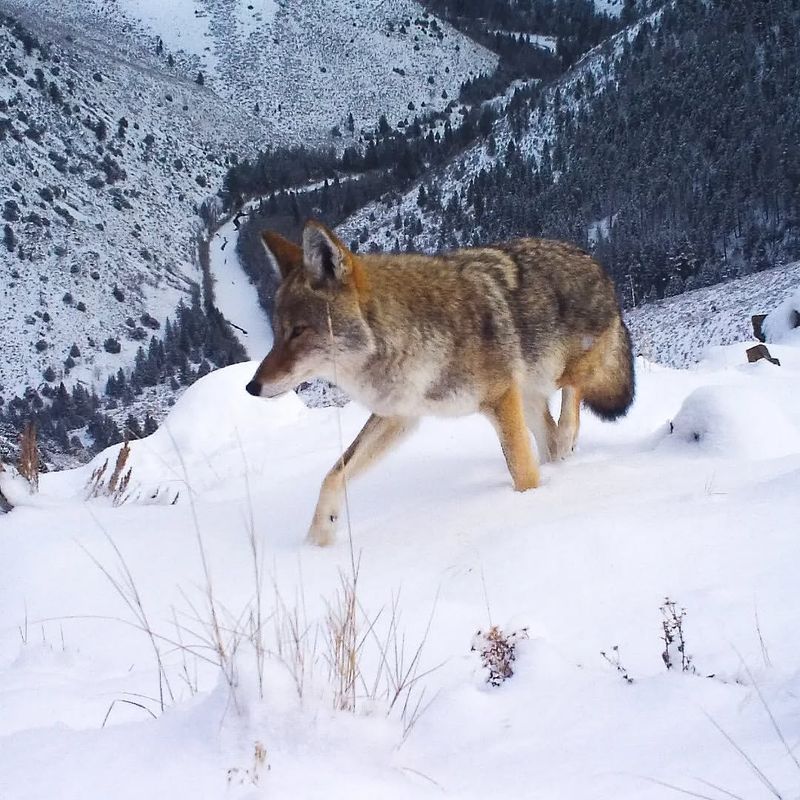
Coyotes are highly adaptable, and understanding their migration patterns helps explain their presence in suburban areas.
While not true migrants, young coyotes often disperse over large distances in search of new territories.
Dispersal is influenced by food availability, population density, and environmental factors.
In suburban areas, habitat fragmentation and development affect their movement, leading to more frequent sightings.
19. Coyote Social Structure
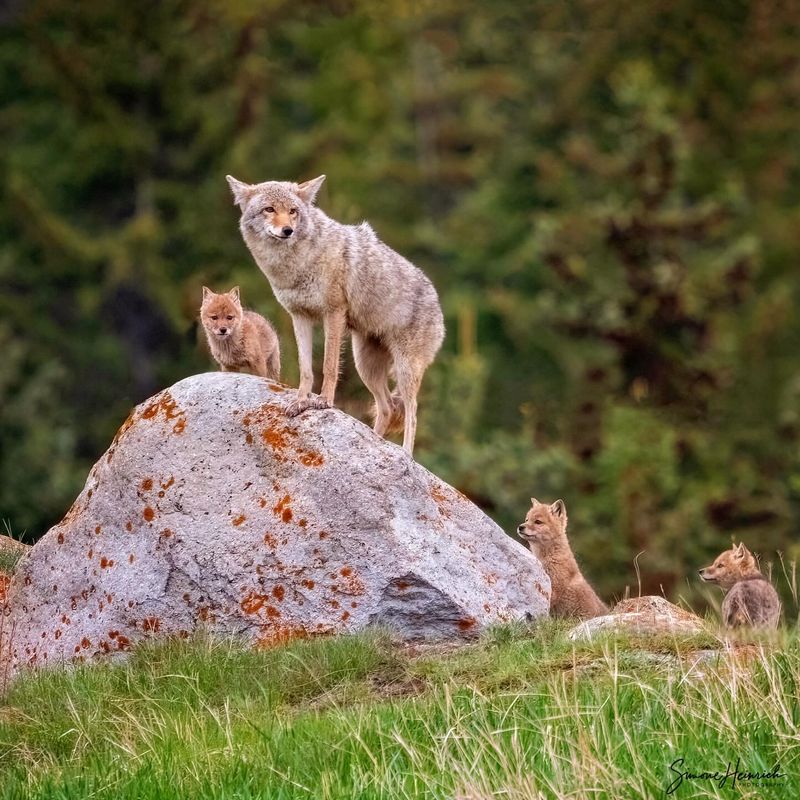
The social structure of coyotes is complex and essential for their survival. They typically live in family units, with a mated pair and their offspring forming a cohesive pack.
In suburban areas, coyotes may adjust their social dynamics to cope with human presence and environmental pressures.
These changes can affect pack size, territory, and communication methods.
Observing coyote social interactions offers insights into their hierarchical structure and decision-making.
20. Coyote Seasonal Behavior
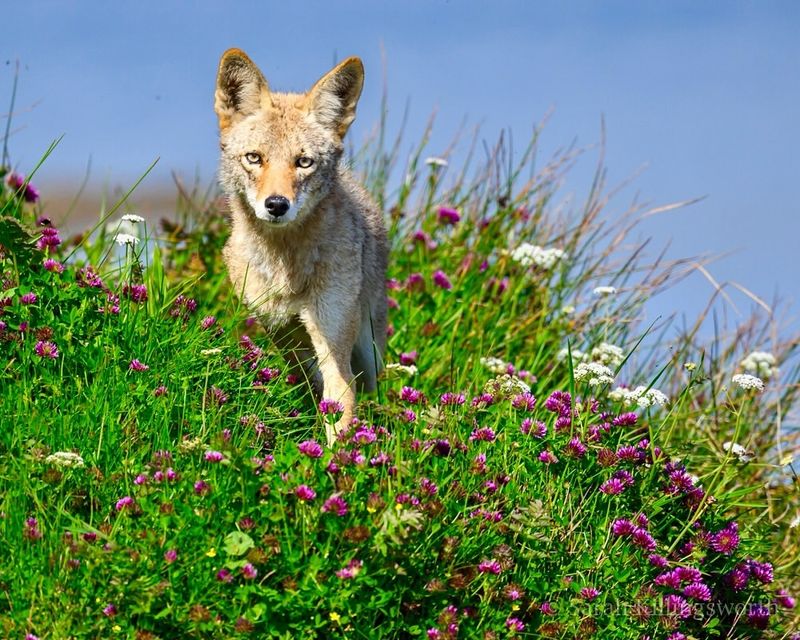
Coyotes exhibit seasonal behaviors that influence their interactions with humans in suburban areas.
During winter, coyotes may become more vocal and territorial as they seek mates. In spring, their focus shifts to raising pups and gathering food for their growing family.
Summer and fall are spent teaching young coyotes survival skills and preparing for winter.
Being aware of these behaviors allows residents to reduce conflicts and better understand coyote motivations.
21. Coyote History In California
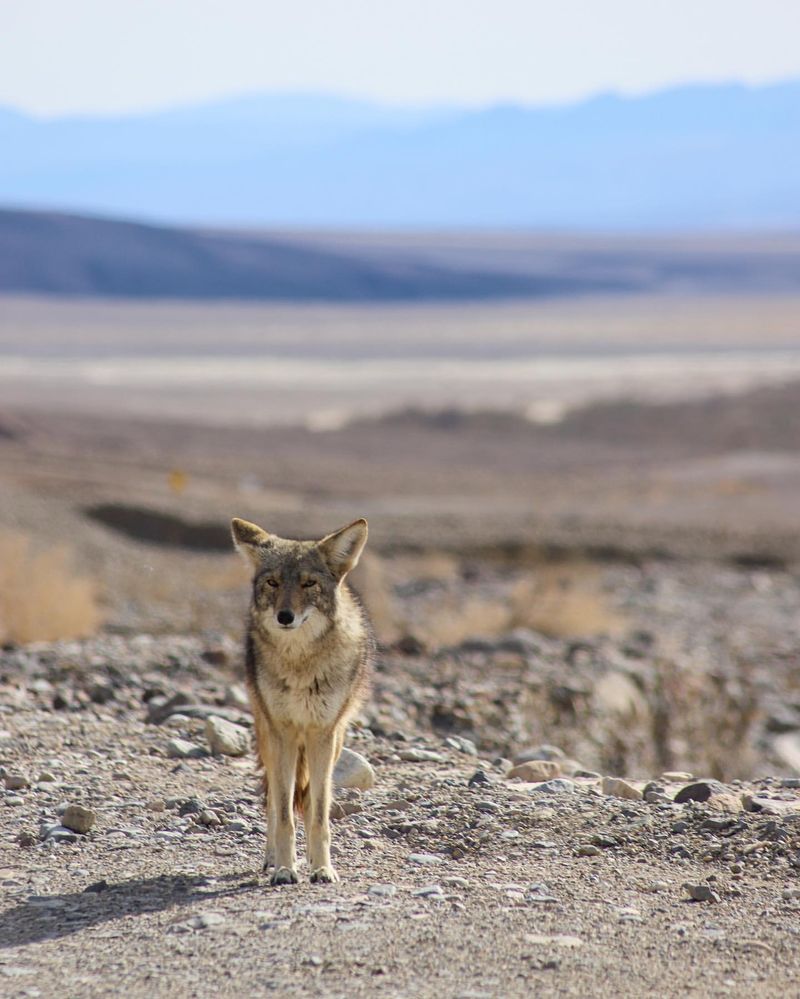
Coyotes have a long history in California, dating back thousands of years. As native inhabitants, they’ve adapted to diverse landscapes, from deserts to forests and now suburban areas.
Throughout history, coyotes have been celebrated and vilified, reflecting human attitudes toward wildlife. In indigenous cultures, they are seen as trickster figures, symbolizing intelligence and adaptability.
In contrast, European settlers often viewed coyotes as pests to be eradicated. Understanding the historical relationship between humans and coyotes informs current management practices.





